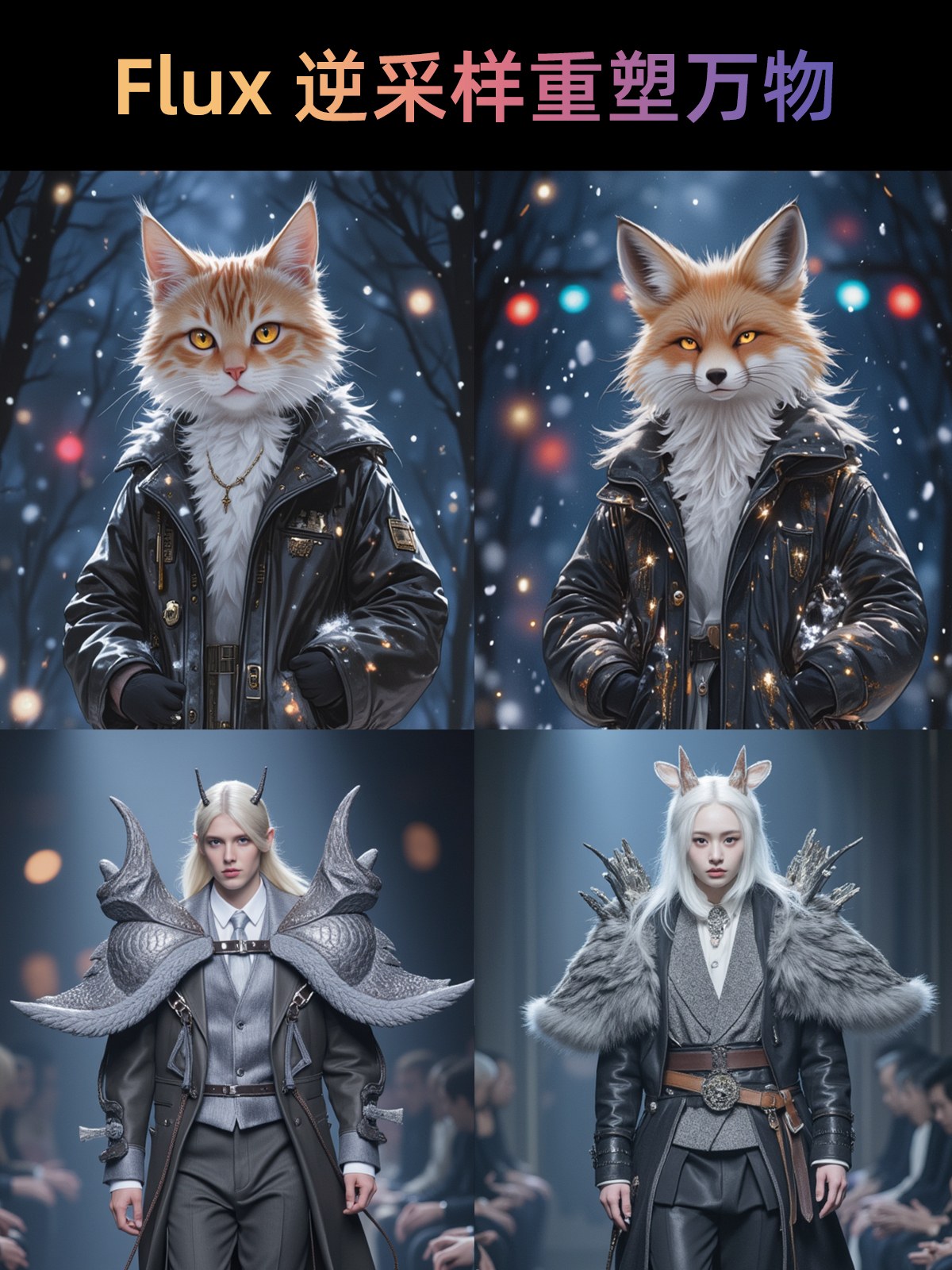Image Reconstruction Evolved: Harnessing the Power of FLUX and Inverse Sampling
1. Workflow Overview

This workflow leverages FLUX architecture and inverse sampling for high-precision image reconstruction, with features:
Inverse Sampling: Mathematically optimizes latent space to edit details while preserving structure.
FLUX Model Control: Dynamic noise scheduling and conditioning for controllable outputs.
Style Transfer & LoRA: Supports custom LoRAs (e.g., anthropomorphic cats) and CLIP text guidance.
Three-Stage Process: Initial Sampling → Inverse Sampling → Regeneration for complex edits.
2. Core Models
Model/Component | Function | Source |
|---|---|---|
ZOZ_FantasyGlass | Base UNET model for artistic styles. | Download to |
CJ_CatMan LoRA | Adds anthropomorphic cat features. | Place in |
ae.sft VAE | Optimizes latent space decoding. | Download to |
T5-XXL + CLIP-L | Dual text encoders for better prompt understanding. | Load via |
3. Key Nodes
Node Name | Function | Installation |
|---|---|---|
| Core inverse sampling algorithm. | Install FLUX Suite. |
| FLUX noise scheduler. | Same as above. |
| Smart image resizing with aspect ratio. | Via |
| Auto-translates prompts (CN↔EN). | Install LibLibAI Plugin. |
4. Workflow Structure
Initial Sampling
Input: Original image →
ImageResize+to1024x1024.VAEEncodeconverts image to latent space.BasicSchedulersets initial noise (28 steps,simplemode).
Inverse Sampling
FluxReverseODESamplerreconstructs latents (eta=0.84, higher = more original).FluxDeGuidanceadjusts style strength (default 3.5).
Regeneration
FluxForwardODESamplergenerates new image.LoRA Loaderinjects custom features (e.g., cat anthropomorphism).VAEDecodesaves final output.
5. Input & Output
Input Parameters:
Image: Upload any image (e.g., animal photo), auto-resized to
1024x1024.Prompts: Use
LibLibTranslate(e.g., "老虎" → "tiger").Inverse Sampling:
eta(0~1, similarity to original),steps(default 28).
Output: One
1024x1024edited image (PNG).
6. Notes
Hardware: Minimum 16GB VRAM (inverse sampling is VRAM-intensive).
Tuning Tips:
eta: Near 1 preserves original, near 0 enables creativity.FluxDeGuidance: >3 for strong style transfer, <2 for prompt-driven results.
Troubleshooting:
VRAM errors: Reduce
stepsor switch tofp16precision.Sampling fails: Ensure input resolution is divisible by 2 (e.g., 512x512).